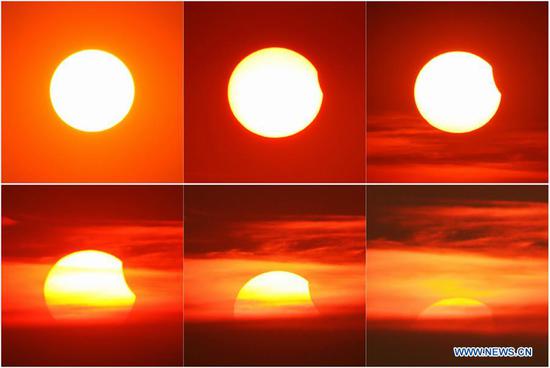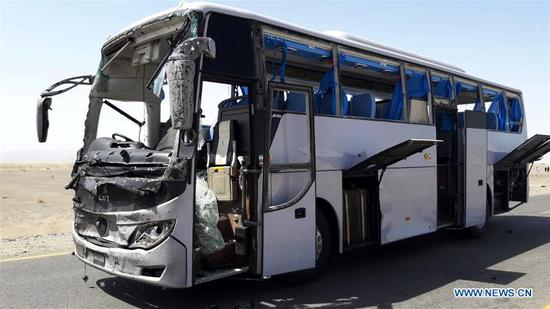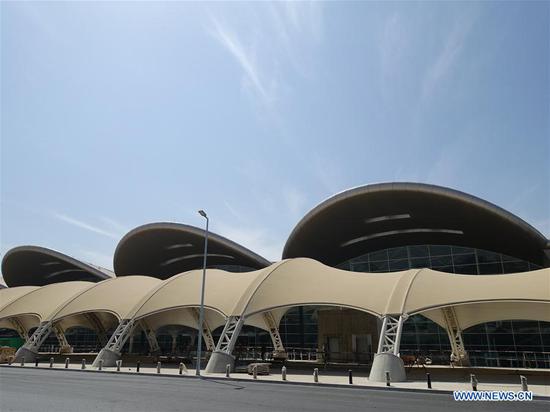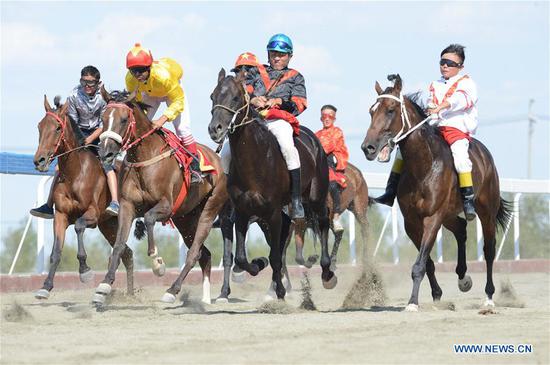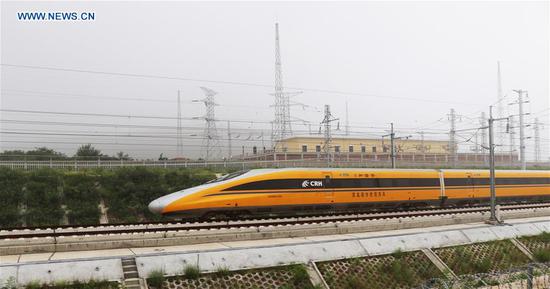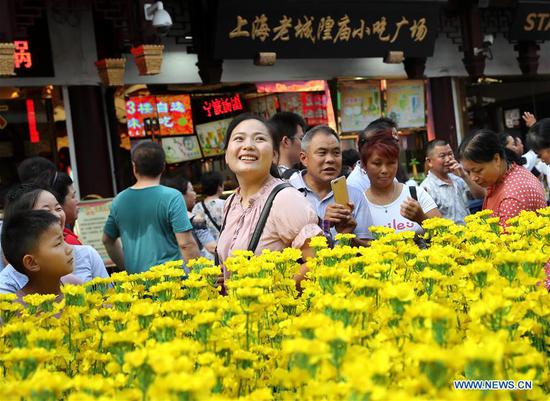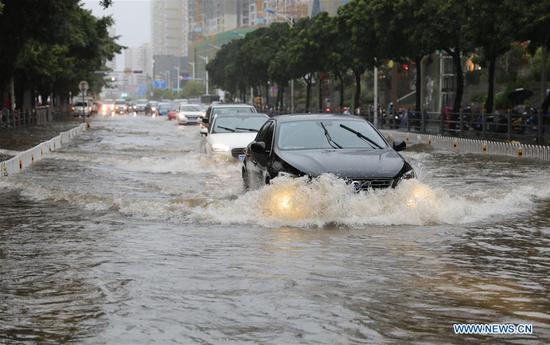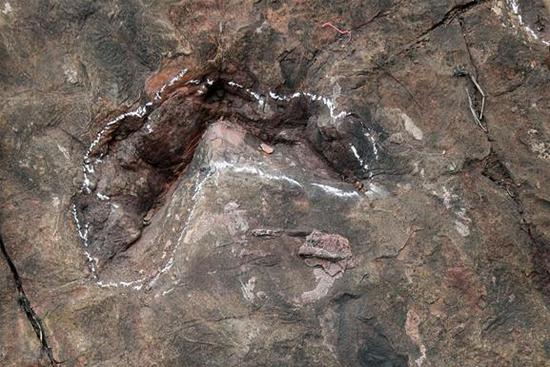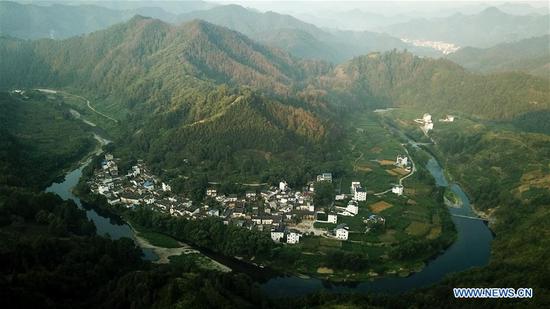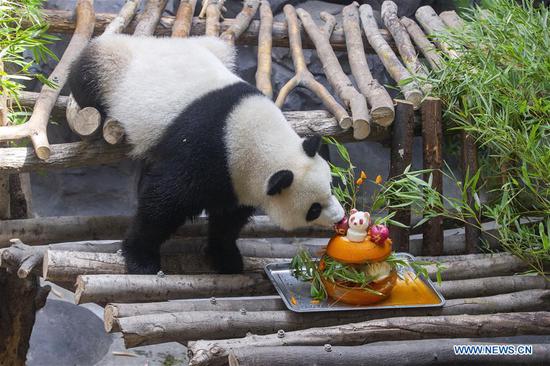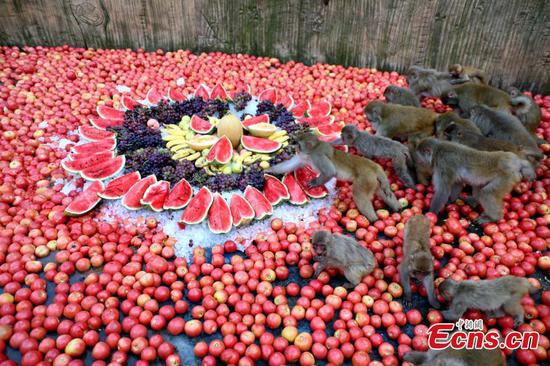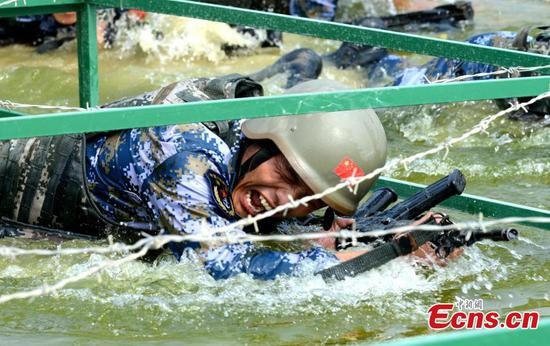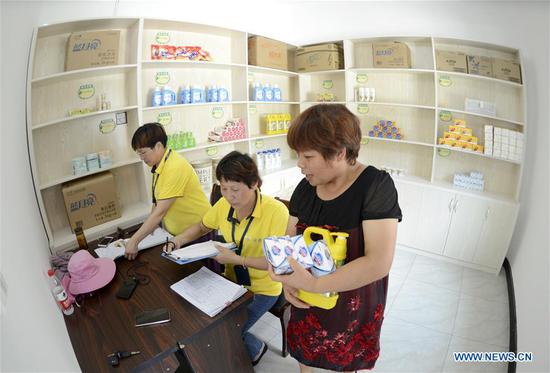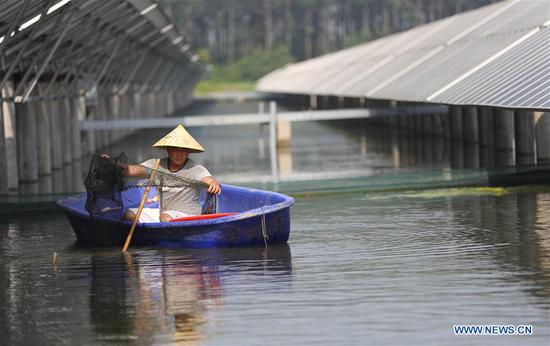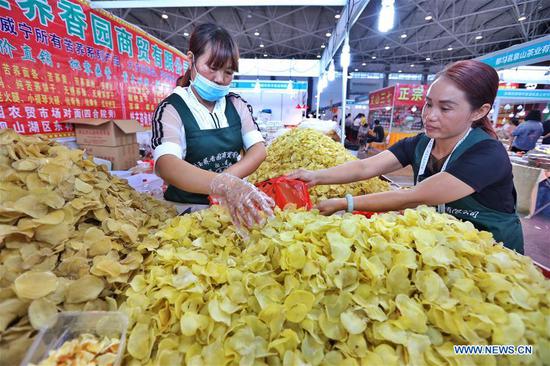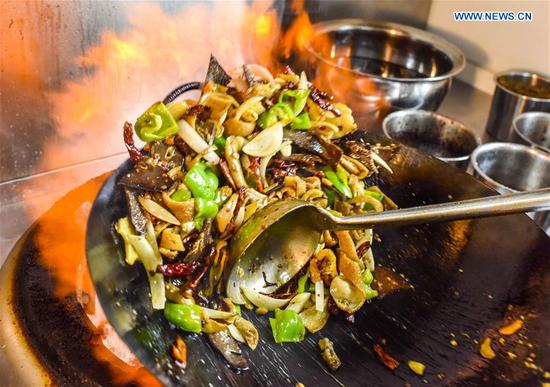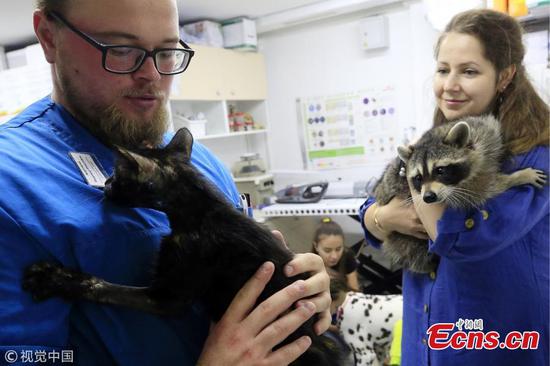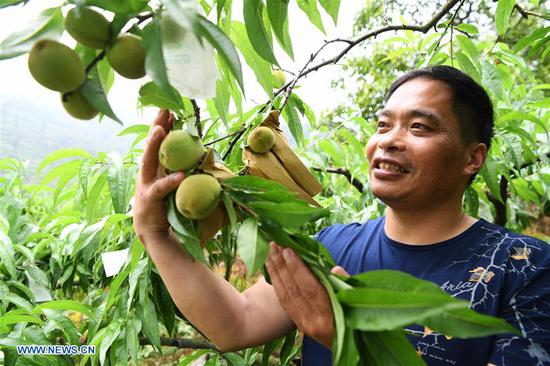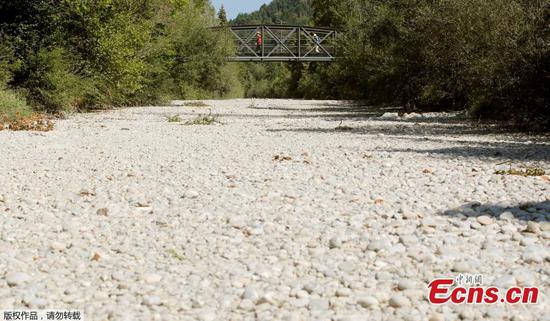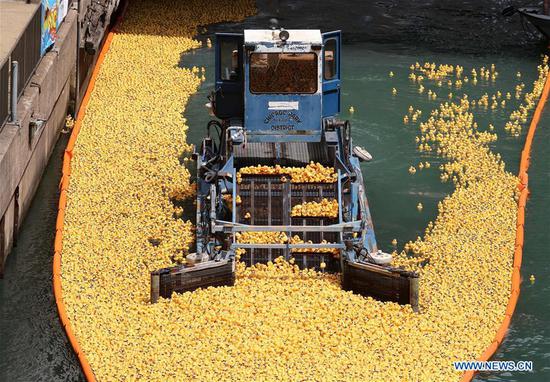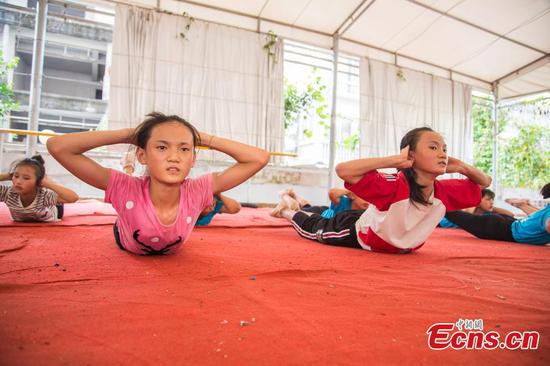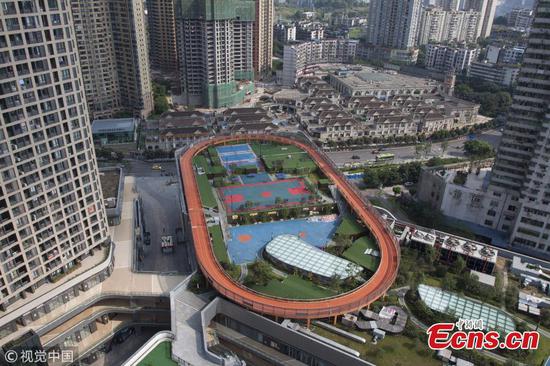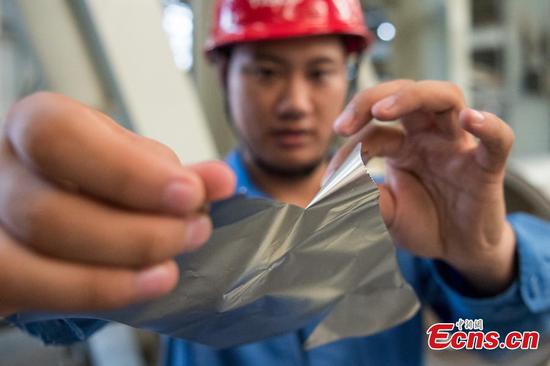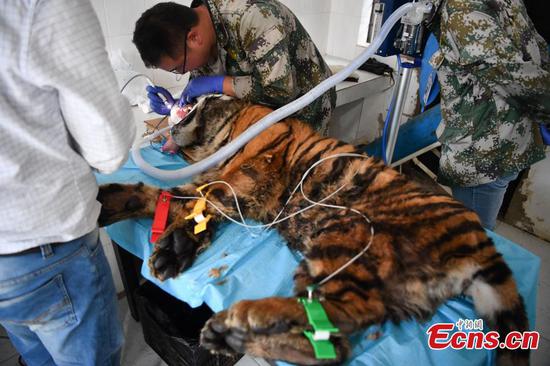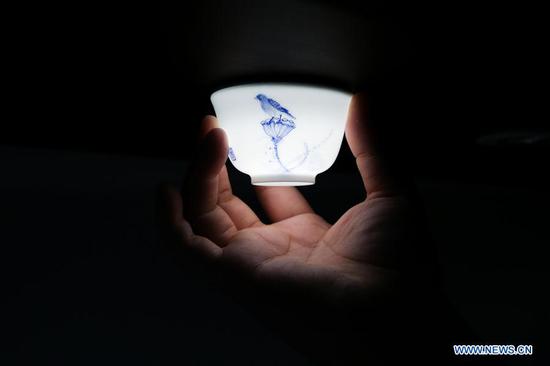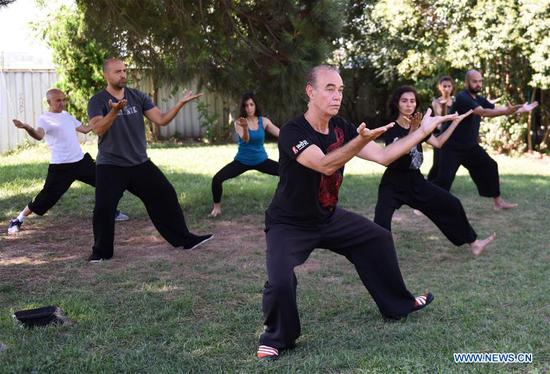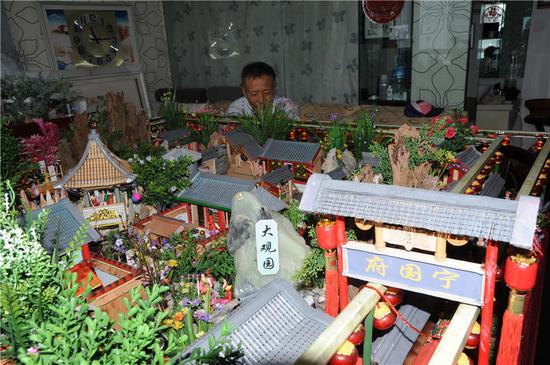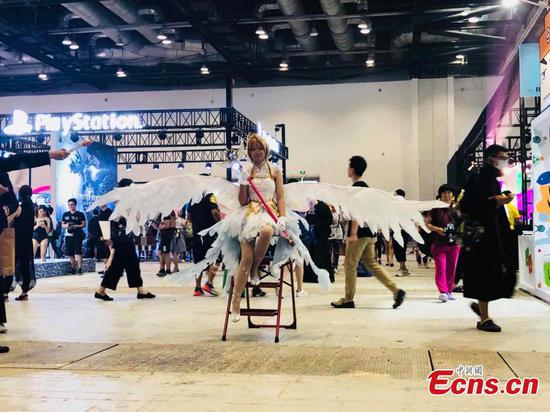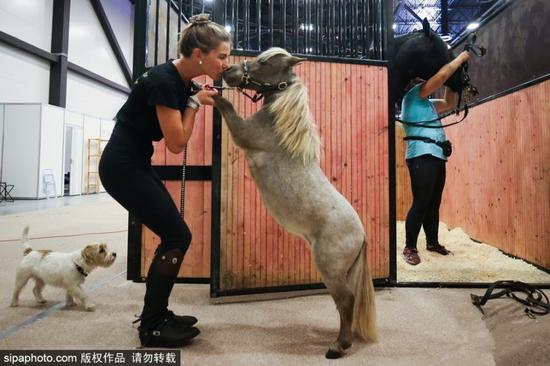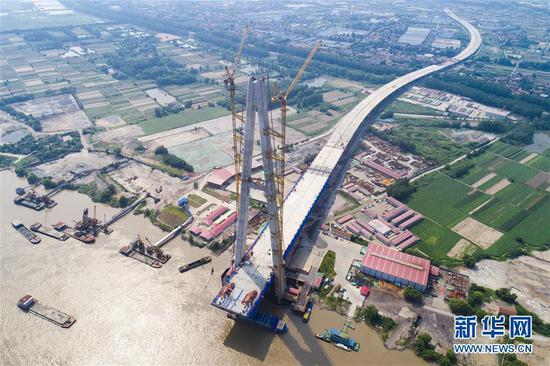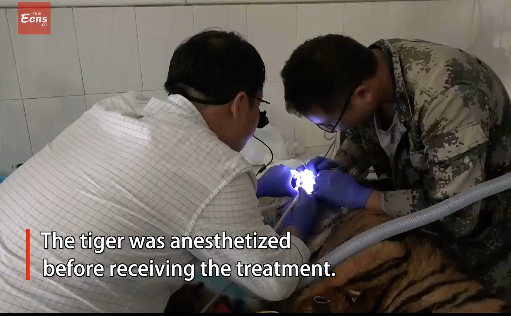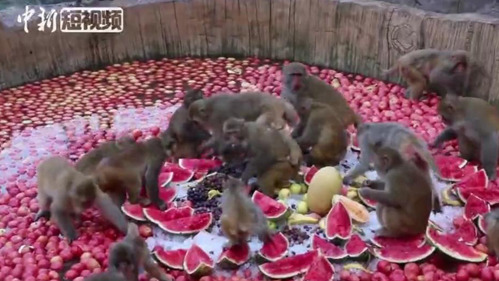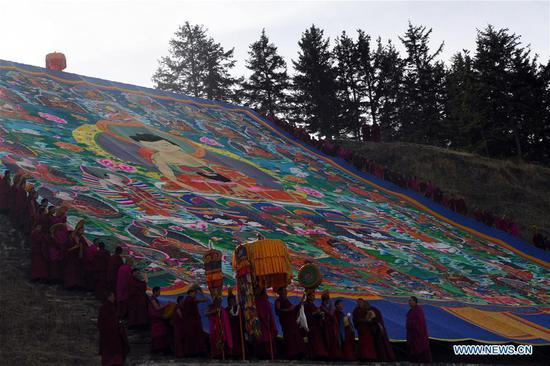
Lamas of Labrang Monastery attend a display ritual of a huge thangka painting of the Buddha in Xiahe County, northwest China's Gansu Province, Feb. 28, 2018. (File photo: Xinhua/Fan Peishen)
Eighteen-year-old Dekyi Drolma has heard of many successful experiences of the alumni of her school -- opening Thangka painting studios, winning notable awards in Thangka painting competitions and holding solo exhibitions -- she wants similar success.
Dekyi Drolma dreams of becoming an outstanding Thangka painter, learning the mysterious and traditional Tibetan Buddhist art and making a contribution to the development of the art.
She participated in a Thangka painting competition held in Huangnan Tibetan Autonomous Prefecture in northwest China's Qinghai Province on Wednesday, with more than 400 contestants from across the country.
"I hope I can get good marks so that I can get closer to my dream," she said.
Huangnan is the cradle of Regong arts, which are Tibetan Buddhist works tracing their origins to the 10th century. Regong arts include Thangka painting, sculpture and engraving.
Thangka are usually painted on cotton or silk, depicting images of Buddhist deities. As Thangka uses mineral pigment, bright colors on the paintings last a long time. It was listed as a UNESCO Intangible Cultural Heritage of Humanity in 2009.
However, previously this kind of exquisite artwork could only be seen in monasteries, the painting skills only passed on a few monks.
Since the local government has started promoting Regong arts in recent years, Thangka has become more well-known.
Local schools have also started to teach Thangka painting.
Dekyi Drolma is now studying Thangka painting in a vocational college in the prefecture. She needs to spend three years to learn every step in the process from preparing materials and making pigment to coloring. Her courses run from 7 a.m. to 8:30 p.m. everyday.
"We are required to concentrate our mind on the painting. Although it takes more than 10 hours per day, I feel relaxed and peaceful in the process of drawing Buddhist deities. I'm very glad that I engage in this kind of art and will make it my career," she said.
Alongside preservation efforts, Thangka also has significant economic value.
Lhachigya, a villager of Kajia Village in Tongren County, is a Thangka painter. His brother and uncle also make money by such painting.
With exquisite workmanship, his family can earn 300,000 yuan (about 44,117 U.S. dollars) every year, and their lives have been improved significantly over the past few years. They have built a new house and bought a car.
"We have seen an increasing number of tourists and merchants visiting Qinghai, who are interested in Thangka and like to collect Thangka paintings. Some masterpieces painted by famous painters can be sold for more than 10,000 yuan each, while a bigger size artwork will be much more expensive," Lhachigya said.
In Tongren County, over 90 percent OF households are practitioners of the painting.
In Huangnan, there are more than 40,000 people working in the Regong arts industry, with an annual output value of 780 million yuan, according to Kunthek, deputy governor of the prefecture.
Many artists have set up companies and painting schools with support of the local government, and many nearby rural residents have joined the industry.
Shaghu Cedain, 44, a top folk artisan, started an art company in 2006. He has provided free painting training for 120 apprentices and offered jobs to more than 300 local farmers who paint Thangka and make other artwork, selling the products abroad to the United State, Sweden and the Republic of Korea.
The booming market has also pushed innovation in Regong arts.
"There are many cultural and creative products regarding Thangka on the market in recent years. For instance, some unique patterns extracted from traditional Thangka paintings have been printed on cups and scarfs," said Nyang Mongya, who runs a Thangka shop in the county. "The young highly-educated and creative generation like integrating skills from other painting schools into Thangka paintings."
"Thangka is expected to become an engine of local green economy," Kunthek said.









